

HEY, TEACH!
THE VICTORIA COLLEGE EDUCATION MAGAZINE



Letter from the Editors
WITH THE CURRENT RISE IN PROMOTINGout of thebox and creativewaysto teach and learn, our contributors explore what is already being done and the potential ways we can continue to foster new and unique learning opportunities. ?Teaching Outside the Box: Creativity in Practice? voices experiences and research surrounding unconventional teaching opportunities from both educator and student perspectives. Thisissue showsthe multi-faceted and intersectional nature of the discussion on out of the box learning opportunities through its diverse range of submissions, from hands-on educational coding programs within an astronomy and astrophysics context, to tailoring assignments and learning opportunitiesto thecultural backgroundsand personal interestsof thestudent Our hope for this issue is to spark new ideas on the importance of exploring new and uncommon teaching practices while providing a platform to learn more about the ways in which education can be better tailored to the individual student, through sharing the experiences our writers have had in exploring thistopic
Thank you to everyone involved in creating ?Teaching Outside the Box: Creativity in Practice.? Wearethrilled to present amagazinefull of so many wonderful submissions, from first year studentsat theUniversity of Torontotograduatestudentsat theOntarioInstitutefor Studiesin Education.Wewant to extend a huge thank you to our incredible contributors for all of the effort they?ve put into their submissions To our phenomenal faculty advisor, Professor JuliaForgie, thank you for your support and encouragement A hugethank you also goesout to our entireexecutiveteam; your incrediblework has not goneunnoticed! Your hard work and dedication brought thisissueto life. To our readers, thank you for picking up or virtually flipping through our magazine. We are so grateful for your support.
Happy Reading!
Sydney and Nina,
EditorsinChief

Sydney Pacheco Nina Dawicki




EDITORSIN CHIEF
Sydney Pacheco
NinaDawicki
HEAD OF PRODUCTIONS
Hannah Kim-Cragg
EVENTSCOORDINATOR
Alex Teschow
SENIOR PRODUCTIONSMANAGERS
BrisaLiu
Melody Mo
Ren Minamisono
ILLUSTRATOR
Sunny Sien
SENIOR EDITORS
Amaan Baweja
Austin Hewu
FEATUREWRITERS

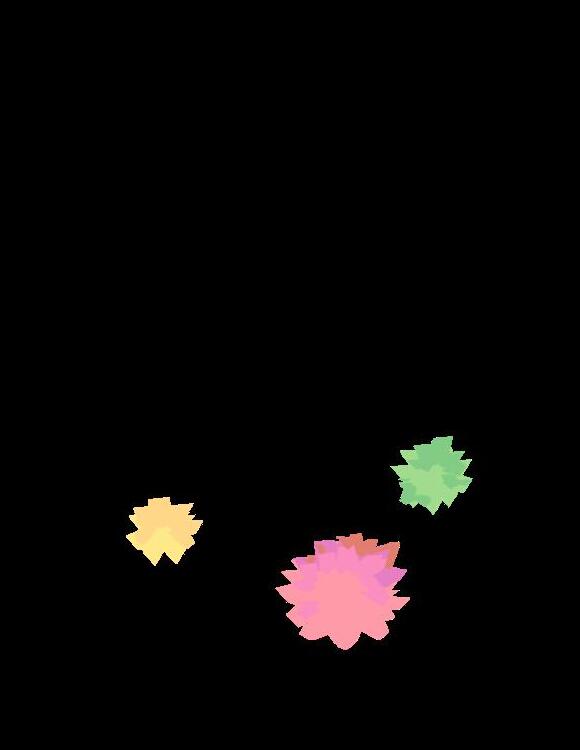
TABLE OF CONTENTS
Letter from theEditors& Tableof Contents
Meet Your Contributors
EricaChong
ArianneRodriguez
INTERNAL RELATIONS
Benjamin Gauntley
SOCIAL MEDIA REPRESENTATIVES
IreneHwang
Lauren deRango
FIRST YEAR REPRESENTATIVE
NicolePacheco
NinaZambito
Aryan Rajagopal

AnneChen
JUNIOR EDITORS
IsabellePoisson
Shiven Srivastava
PoojacGandhi
JacobAxford
CynthiaLin
StephanieChan
RainaYang
CarinaPorrett
UdanyaSinghabahu
Praneet Kaur
SanthiyaKuganeswaran
JUNIOR PRODUCTIONS
CharlizeMarshall
Mariam Abbasi
Molly Bibawy
OliviaCruickshank
SophiaHuang
Tiffany (Xinyu) Tian
Yi Lin
AmandaYu
11-14
TeachingLiteracy in aMulticultural School Context by SuzyHam 15-16 17-20
21-22
Metamorphosis:AVision for Teachingand Learningby AryanRajagopal
Storiesbetween theLines:Exploringthe Scienceof Readingin Ontario'sNew Curriculum Through IndigenousStorytelling and Learningby SanthiyaKuganeswaran
Beyond Stargazing:EmpoweringStudents with Codingand Astronomy by LouisBranch
TeachingOutsidetheBox:Facilitating Identity Exploration and Promoting Well-Beingin EmergingAdult University Studentsin aMulticultural Contest by AnastasiaMeiXuanLiu
23-26
27-30
31-34
35-38
39-42
Six Schoolsand ThreeCountriesLater by Lena Harwood-Stamper
Creativity in Education:ACross-Cultural Perspectiveon Learningby RachelYuChuXie
First Year Voices
FosteringClassroom Community Through CollaborativeLearningby EricaChong
Final Thoughtsfrom theExecutiveTeam


Louis Br anch:
If I could live a week as a different major, I?d choose Ecology and Evolutionary Biology This field aligns with my interest in habitability and the search for life, focusing on how life adapts and evolvesunder various conditions? a perspective that complements my study in astronomy.
Sant hiya K uganesw ar an:
If I had to live a week asa different major, I?d choose psychology - it complements my current programsof education, sociology, and English perfectly by helping understand how students learn and behave
It ?d be fascinating to explore the mental processes behind teaching and learning for a week!
If you had to liveaweek asa different major, which one would you choose?
Rachel Xie:
I would love to be a psychology major for a week to learn about all the nuances about human minds
Lena Harw ood-St am per:
I would love to be a fashion major but U of T doesn? t offer that so I would study art history at U of TI would love to be a psychology major for a week to learn about all the nuances about human minds.
Meet Your Contributors!
Sant hiya K uganesw ar an:
I?d rather never eat my favorite food again. Eating just one food forever sounds like a nightmare for my taste buds - variety isthe spice of life!
Suzy Ham :
My favorite food is sushi.... but I can live without eating them! I hope.... :(
Would you rather: Eat onefood for therest of your lifeor never eat your favourite food again?
I would never eat my favorite food again because I do not want to missother possibilities Lena Harw ood-St am per:
I would rather eat only potatoes for the rest of my life, as long as they can have toppings
Rachel Xie:
Louis Br anch:
I?d rather never eat my favorite food again Exploring different cuisinesand discovering new flavors is too exciting to give up, and who knows?I might find something even better!
Aryan Rajagopal: In general, probably Drake Right now, probably Tyler, The Creator (I have had Chromakopia on repeat for at least the past two weeks)
Suzy Ham : Having a hard time choosing between Yorushika, YOASOBI, Yuuri, Novelbright, BTOB, Aimyon, and etc etc... (I listen to mostly K-pop & J-pop!)
Who isyour favouritemusic artist?
Sant hiya K uganesw ar an: The Neighborhood! Their lyrics and melodieshave this incredible way of capturing raw emotion, and their songs grew with me through my adolescence
Their music alwaysseemsto align with how I?m feeling whether it's happy and upbeat or more mellow
Lena Harw ood-St am per: Macklemore
Meet Your Contributors!
Ar yan Rajagopal: Probably OISEto be honest, I've never seen a building go from so modernized to so dull in a matter of two floors
(though I maintain that the quiet space in the basement is an amazing spot to lock in on a Tuesday night)
Er ica Chong:
My favourite spot on campus is the Goldring Student Centre It's such a great student hub! I love attending the community-focused events that are hosted here!
What'syour favouritefood placearound campus?
Er ica Chong: I actually haven't explored many food places around campus, so I'd love some recommendations!
Which UofT building interiorsmatch theexteriors theleast on campus?
Teaching Literacy in a Multicultural School Context
SUZ Y H AM
FOURTH YEAR
EN GLISH (M AJOR), SOCIOLOGY (M IN OR), ED UCATION AN D SOCIETY (M IN OR)



ACCORDING TO the Pacific Resources for Education and Learning, literacy is defined as the ability to: ?[r]ead printed material thoughtfully and critically for pleasure and for knowledge, and [w]rite for a wide variety of purposes, both practical and creative? (2004). While there are many kinds of literature in the context of schools?especially financial and technological literacy?I will be focusing on literature from the perspective of English language learning and acquisition I do not read or write extensively outside of school and have been taught and required to read and write primarily academic papers during high school. I also have the habit of writing in the passive voice, as well as in lengthy and/or run-on sentences from this experience. As such, I frequently prioritize academic papers and tend to devalue other forms of writing in school settings. However, in pursuing a career in literacy education, I must be cognisant of how my preferences may bias my students. This discussion of theintersectional positionsof educatorswill bea pervasive theme throughout the rest of this paper as possible methods of teaching literacy in schools
are explored further in depth. The supplementary lessons in English I received when I was a new immigrant to Canada had a significant positive effect on me. When I first arrived in Canada at the age of 7, I was provided with additional in-school English grammar and speaking lessons to help me better adapt as an ESL?English as a second language?student. I was taught rudimentary skills focusing on mastering the alphabet, grammar, and photonics. I was also introduced to Korean-speaking students and faculties when I could not understand the English teacher?s instructions This experience enabled me to easily adjust to the school environment and inspired a passion for teaching the English language. It was a source of empowerment and comfort for me as a young immigrant to a foreign land and consequently shaped my outlook and recommendation for the future of literacy education.



Students should have access to individualized literacy programs and teaching pedagogies that are relevant to their lives, connect totheir cultureand background, and fit within their worldviews Educators should be expected to learn about their studentsand their cultural backgrounds to help them better relay information and personalize their teaching curriculums. A one-size-fits-all approach to education should never be the status quo for educators They should be responsible for being innovative and relentless in their effortsto improvethequality of education for all. Toulouse?s article (2013) describes how First Nations, Metis, and Inuit (FNMI) students?literacy

education should be fostered by a curriculum that incorporates their background through incorporating FNMI books, songs, field trips to historical/cultural locations, and the students? learning styles (p 2-4) Similarly, in Bank?s interview on his concept of the ?five dimensions of multicultural education? (n.d.), he describes the need for equity pedagogy where teachers adapt their teaching styles to match the diverse learning
styles of students As many students in schools today are bilingual from diverse cultures and backgrounds, it is important to acknowledge and actively incorporate these proposals. In my own experience, the librarian actively asking questions about me, my culture, and my learning styles helped me feel seen and appreciated; not just as a stranger and foreigner who transferred here. This experience has helped me realize the power of actively incorporating students and their backgrounds into their learning.
Literacy programs should foster the students? positive identity development and personal expression as a source of empowerment Educatorsshould alwaysremember that thequality of our literacy education deeply affects the students? personal and intellectual growth and well-being Price-Dennis? article (2017) describes how Black adolescents should be provided with spaces to express themselves and learn about the world,especially with therisein theassault casesof Black women (p. 1, 3-4). They especially highlight the need for narratives around Black women to be modified to not adeficit but astrength perspective, which is required to foster ?collective healing, collective consciousness, and ultimately, collective transformation? (Price-Dennis, 2017, p 15) When I was learning English as an ESL student, I was actively encouraged to talk about my own experienceswithin my family and my culture. I was

also invited to choose to read books on my Korean culture, our history with Canada, and Korean immigrants here today. These opportunities gave me a sense of relief that my culture was being understood, or at least effortsweremadetodoso. It also provided me with a safe space to share my experiences and develop my identity within the school setting helping me adjust well to this new school environment, and achieve my personal and academicpotential.
Students should have access to individualized literacy programs and teaching pedagogies that are relevant to their lives, connect to their culture and background, and fit within their worldviews.
oral language in literacy education by incorporating our knowledge of the four major language systems (semantics, syntax, phonology, and pragmatics, respectively) by promoting active group discussions between students, and read-aloud activities (Bainbridge & Haydon?s article,2017,p 100-4)
In my own experience, the teacher has actively encouraged meto speak English even when my pronunciation wasnot optimal; encouragingme to develop my speaking proficiency through trial-and-error
For example, when I was struggling with pronouncing the ?th? phonics, the teacher used various methods to assist my understanding Techniques such as showing the lip and mouth movement and pronouncingthephonicthemselves, writing instructions on how to pronounce it, and utilizing the internet allowed me to learn effectively Complemented by standard readingcomprehension testing I was able to assess my progress while feeling a sense of accomplishment. It isthrough thisexperiencethat I can see how an emphasis on oral competency can have a major impact on a student?s literacy development

Oral language should be actively used by students to promote their literacy acquisition Bainbridge & Haydon?s article (2017) describes how despite the emphasis on reading and writing in school curriculums, much of classroom communication occurs orally. As a result, student performance in literacy is deeply intertwined with their listening and speaking abilities (p. 103-4). Consequently, they advocate for an emphasis on
In conclusion, I analyzed possible approachesI would takewhen teachingliteracy asa future educator I first argued for fostering an individualized literacy program framework, fostering identity development and personal expression as a source of empowerment, and then focusing on oral language development. These strategies are based on contemporary literature on literacy teaching pedagogies, as well as incorporating my own experiences as a former struggling immigrant student. Thesediscussionson appropriate teaching pedagogies for literature, I believe, will lead to an improvement in student lives, academic performance, and, consequently, thewelfareof our society.




References



Bainbridge, J. & Heydon, R. (2017). Chapter 3- LanguageDevelopment and Oracy in Constructing Meaning: TeachingLanguageand Literacy K-8,Nelson Education Ltd
Banks,JamesA.and MichelleTucker (n.d.).?Multiculturalism?sFiveDimensions.?NEAToday Online.
Pacific Resources for Education and Learning (2004). Early Literacy and Assessment for Learning (K?3) SeriesPrint Literacy:ATeacher?sStory https://filesericed gov/fulltext/ED490186pdf
Price-Dennis, D, Muhammad, G E, Womack, E, McArthur, S A, & Haddix, M (2017) The Multiple Identities and Literacies of Black Girlhood: A Conversation About Creating Spaces for Black Girl Voices. Journal of Language& Literacy Education,13(2), 1-18
Toulouse, P R (2013) Fostering literacy success for First Nations, Métis and Inuit students Research Monograph #15.Retrieved from:https://www.onted.ca/monographs/what-works/fostering-literacysuccess-for-first-nations-m%C3%A9tis-and-inuit-students



Met am orphosis: A Vision for Teaching and Learning
ACCORDINGTOA 2017 SURVEY conducted by theOntarioInstitutefor Studiesin Education (OISE),only 50%of Ontariansweresatisfied with the education system in theprovince(OISESurvey RevealsPublicOpinion on Education in Ontario, 2018).Whilemy experienceswith Ontario?s education system havebeen pleasant,they fall short of warrantinghigh praise TheK-12system often felt stagnated and rigid,unabletoadapt tochanges in students?work stylesand classroom environments In thispaper,I aim toanalyzethese lived experiencesand comparethem tomy teaching philosophy,exploringthelearningand teaching processesasinterlockingpiecesin thecomplex puzzleof education lived experiencesand compare them tomy teachingphilosophy,exploringthe learningand teachingprocessesasinterlocking piecesin thecomplex puzzleof education
Effectiveprogramsrely on incorporating internal and external feedback,and education isno exception.In Ontario,curriculum revisionsreflect periodiccritiquesfrom variousstakeholders,but
students? theprimary recipientsof education? are often excluded from thisfeedback loop.Students my agevoiced dissatisfaction with how certain subjectsweretaught,notably at thesecondary school level.Courseslikehistory and politics resonated with me,but othersfound them uninspiringduetothemethodsof delivery and the assessmentstied to them.I maintain that, amongmany things, thiscould be attributed tothe differencesin learning styles I feel that the current system strugglesto acknowledgethis, instead promotinga generalized, one-size-fits-all approach reminiscent of 19th-century



factory-styleschooling Theformatsof assessingcomprehension and application of learned knowledge haveremained relatively static,only changingif astudent had alearningdisorder or waslearningEnglish for thefirst time.Schoolsmust play an activerolein preparingstudentsfor both post-secondary education and theworkforce,tailoringapproachestomeet varied learningstyles Theoriessuch asJean Piaget?s cognitivedevelopment model emphasizetheimportanceof assimilatingand accommodatingknowledgeas it isdiscovered (Piaget,1964).Thisprocessmay seem easy for somestudents, but othersmay feel pressured toconform torigid learningstylesthat stiflecreativity Theprovince?srecent effortsto de-stream certain coursesat thegrade9level (Balintec,2023) arepromising,but changesmust begin earlier.Considerationsof learningstylesthrough individual and group assessmentscan help identify students?strengthsand weaknessesin tacklingnew challenges
If theultimategoal of education istochallengestudentsand preparethem for theworkforce, schoolsshould actively encourage collaborativeproblem-solvingthrough group assessmentsand discussion-based activities.In most careers,theability to work in ateam environment iscrucial to success,yet thecurrent system thriveson ruthlesscompetition and high expectations. My experienceswith group projectsand classdiscussionshaveoften deepened my understandingof coursecontent,asmy peerswould contributeperspectivesI had

not considered previously Even an elementary-level math classmay benefit from group conversationson themost effectiveway to solveacomplex equation.Thesamecan besaid for high schools;my experienceswith in-class discussionsaresimilar tomy conversationsin university seminarsand tutorials.
Studentslearn best when they enjoy their educational experiences,which requiresaddressing thestressorsembedded in traditional classroom environments Nothingwasmorecommon in high school than astudent pullingsuccessive all-nighterstomeet last-minutedeadlines.I found that teacherswhoshared deadlinesin advanceand instructed studentson how tomanagetheir time effectively werebetter received by students,both in termsof reputation and academicperformance Onescholar whobacksthisup isB F Skinner,who produced astudy that covered thedetrimental impactsof aversivestimulation on children in schools(1954,p 5) Skinner?sstudy proveshow impactful sustained stressand anxiety can haveon students,even from ayoungage,further proving how important thedevelopment of study skillsisin tandem with curriculum content Theprioritization of collaborativelearningand theremoval of stressors,coupled with positivestudent-teacher relationships,mademy learningexperiencealot

smoother
Educatorsshould beat theforefront of positivereinforcement,drivingaclassroom environment that iswelcomingtostudentsand open tocritique.Havingopportunitiesfor one-on-onetimewith teachersisagreat way to enforcean activereinforcement process When teachersreviewed my work and provided feedback? whether positiveor critical? it felt validatingtoknow that my effortswere

acknowledged However,thefrequency of feedback duringassessmentswasoften insufficient,asmost teachersprovided critiqueonly after projectsor essayswerecompleted Thislack of guidance duringtheprocessleft students, includingmyself, hesitant toseek help for fear of embarrassment. Providingassigned timefor officehoursor one-on-onecheck-inswould greatly benefit students.Thesenseof careassociated with these progressupdateswould givestudentsthenecessary redirection and confidenceboost they need to succeed long-term.Teacherscan further support studentsby makingassessmentsmorefocused on application than memorization Oneexampleis grade10history, acoursewhich wasoften relegated tosummer school by studentswhohad nointerest in thecontent or itsrelevance Through group assessmentsthat challenged our beliefs about theWorld Wars,my classmatesand I cameto understand how statesinteract and the implicationson regional stability Such discoveries would not havebeen replicated in atextbook reading.When teachersaremorewillingto promoteapplication-based learningthat goes beyond knowledgeretention, studentscan let their

mindswander without theanxiety of memorizing hundredsof pagesbeforeafinal exam.
Thepubliceducation system isarguably one of themost complex institutionsin Ontariodueto itsinherently subjectivenature Thereisnosingle ?right way?toeducatestudents,but thereare strategiesthat can createmoresupportiveand effectiveschool environments Alearning environment based on positivereinforcement and stressreduction can maketheeducation experiencemoreenjoyablefor students Encouragingcollaborativeproblem-solvingwill preparethem for theworkforcethrough application-based learning.My vision for teaching and learningencompassesastudent experience that isenriched by theseideals,offeringstudentsa path tocontinuousgrowth.Just astheeducation system itself must evolve,sotoomust our approachestoteachingand learning,ensuring that nostudent isleft behind in their journey toward success.


St or iesBet ween t he Lines: St or iesBet ween t he Lines:
Exploring the Science of Reading in Ontario's New Curriculum Through Indigenous Story telling and Learning
MISS KUGAN stood in front of her Grade3 class, her fingers nervously flipping through the fresh pagesof theOntario curriculum binder She knew the words inside well enough, but teaching the new ?science of reading? approach with its focus on phonics and structured literacy felt worlds away from the vision she had for her classroom. Adding to her challenge was the mandate to integrate Indigenous perspectives intoher lessons.
She had read the curriculum updates, highlighting the importance of including Indigenous storytelling traditions, but how could she do it authentically? Could she really balance thesenew expectationswith effectiveteaching?
The bell rang, jolting her from her thoughts. Students bustled into their seats, their eyesexpectant Among them wasNoah, ashy boy with dark, thoughtful eyes who had recently transferred from a nearby reserve Though he rarely spoke, Miss Kugan noticed how his face lit up when she mentioned stories She had an idea ? one that had been lingering in the back of her mind ever since she met Noah?s grandmother, Elder Sarah,at acommunity event


Santhiya Kuganeswaran
ThirdYear SociologyMajor Education&Society, EnglishMinor
"Class," she began, "we?re going to do somethingalittledifferent today."
Thekidsperked up.
"Today, we?ll start our reading lesson with a story But not just any story We have a special guest? Noah?s grandmother, Elder Sarah, who has kindly agreed toshareoneof her storieswith us."
The door opened, and Elder Sarah entered the room, her silver hair tied neatly back, eyes warm with wisdom. She greeted the children in Ojibwe and then in English, her voice flowing like wind through trees.
The students sat in a circle on the floor, leaving their books behind. Elder Sarah began her story? a traditional Anishinaabe tale called ?Wenabozho and the Teaching of the Thunder Mountain Loon ? The story spoke of learning from nature and the wisdom passed down through generations.Therhythm of her wordswasdifferent from the usual read-alouds; there was a cadence, a heartbeat,that MissKugan realized didn? t just tell a story? it sang it

As the circle gathered, Elder Sarah began her tale, drawing everyone in with her warm presence ?Once everyone had gathered,? she recounted, ?the wise one taught them the language. He didn? t just teach them to speak; he shared the profound principle of language itself It revolves around madwewechigewin, the art of producing sounds that create connections between usand theworld around us.?
Miss Kugan watched the children, their facesrapt Even theoneswhostruggled most with reading were completely absorbed. Noah, usually quiet and withdrawn, sat up straight, eyesbright, lipsmovingasif repeatingthewordsin timewith his grandmother The journey wasn? t just a story? it was alive in that room, weaving connections between language, identity, and the art of learning
When Elder Sarah finished, there was a silence, deep and reflective. Miss Kugan felt it too? the power of storytelling She hadn? t planned to, but shefound herself standingup and saying, "Now, let?s look at how the words from Elder Sarah?sstory work."
She walked to the whiteboard, writing down keywordsfrom thestory: loon, voice, words They began to break down the sounds, the syllables. But now, instead of dry phonics, the words had life The students repeated them and wrote them, learning to read in a way that resonated with purpose
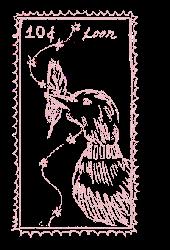

Days passed, and soon the stories became a regular part of the class Elder Sarah visited weekly, each time sharing a new story. The students began to look forward to these visits, and their reading skills improved? not just because of structured drills, but because they found joy and meaningin theprocess.
One afternoon, Miss Kugan overheard a conversation during recess. Noah and a group of his classmates were playing by the swings, their voicesanimated.
"Noah, tell us another story like your grandma!" oneboy said
Noah smiled shyly, and for the first time since he?d joined the class, he began to speakwithout hesitation He told the tale of the trickster Nanabush, hiswordsflowing just asElder Sarah?s had. The other kids listened, laughing in all the right places, asking questions, and repeating phrasesin Ojibwe.
Miss Kugan watched from the window, her heart full Thiswaswhy she had become a teacher Not to tick off boxes in the curriculum, but to inspire her studentstoseetheworld beyond thetext
The curriculum updates had pushed her out of her comfort zone, but in doing so, they had opened the door to something far more valuable She had learned to teach outside the box, not by abandoning structure, but by weaving it with creativity and respect for thevoicesthat had long been missingfrom theclassroom.
The bell rang, and the kids came rushing back inside, ready for their next lesson As they sat down, Noah came up to Miss Kugan?s desk, hesitatingfor amoment beforespeaking
"Miss Kugan," he said quietly, "do you think one day I could be a teacher too? Like you... or my grandma?"
Miss Kugan knelt to meet his gaze, smiling warmly "Noah, I think you already are."
B ey ond S t ar gaz ing: E mpower ing S t udent s wit h
Coding and A s t r onomy
Louis Br anch
F our t h y ear
A s t r onomy and A s t r ophy s ic s Maj or E duc at ion & S oc iet y and His t or y & P hil os ophy of S c ienc e & T ec hnol ogy Minor

WHAT COMES TO MIND when someone says they are "doing astronomy"? For most, it's stargazing? peering through telescopes at distant galaxies, planets, and stars. But in the world of modern astronomy, the real work happens far from the eyepiece through coding and data analysis. Astronomers today rely on programming to process vast amounts of data, making coding as essential as thetelescopesthemselves
The opportunity to explore astronomy through coding is the experience Coding the Cosmos offers to high school students. In July 2024, workshops at the University of Toronto and McMaster University introduced 52 students entering grades 10?12 to the data-driven world of astrophysics. Many were coding for the first time, learning Python to analyze real astronomical datasets The goal? To inspire a diverse new generation of students, especially those from underrepresented backgrounds, by showing them that acareer in astronomy iswithin reach.
T he Wor kshop
Exper ience
Over the course of three days, Coding the Cosmos gave students a crash course in the two pillars of modern astronomy: coding and data analysis Each day was a blend of hands-on programming activities, lectures on astronomy, and collaborative group projects The curriculum introduced students to Python, a powerful programming language widely used by astronomers. Starting with basic coding exercises, they progressed to analyzing astronomical data and tacklingcomplex questionsabout theuniverse.
Participants worked in small groups on projects that solved real-world problems For instance, some calculated the mass of the supermassive black hole at the center of our galaxy, while others used heat maps to study the cosmic microwave background Each project was

guided by interactive coding worksheets, which provided students with the tools and step-by-step guidance to explore astrophysical concepts while sharpeningtheir programmingskills.
Beyond technical learning, the workshop featured a panel of undergraduate and graduate students? many from underrepresented backgrounds? who shared their personal journeys into science, offering relatable insights about navigatinguniversity and potential career pathsin astronomy For studentswho had never considered a future in science, this was a pivotal moment of inspiration.
Pr ogr am Impact and Resul t s
The impact of Coding the Cosmos extended well beyond coding lessons. One of the program?s key goals was to make astronomy more accessible to students from underrepresented and low-socioeconomic-status backgrounds The diversity of participants reflected that, with over half identifying asfemale, and many hailing from a range of racial and ethnic backgrounds, including South Asian,Chinese,and Arab
Survey results further highlighted the program?s success. When asked to rate their knowledgeof astronomy on ascaleof 1(New to the subject) to 7 (Deep knowledge), students?average scores rose from 36 to 50 Their confidence in coding saw a similar jump, from 32 to 40 Even more importantly, students reported a newfound belief in their ability to pursue a career in astronomy or related fields, a crucial boost in self-confidence
But the numbers only tell part of the story. Student feedback was overwhelmingly positive, with many describing how the hands-on nature of the projects gave them a new perspective on what astronomers actually do As one student put it, ?Beforethisworkshop, it wasalittleunclear exactly how astronomers do their research, but I feel more ableafter seeingit hands-on ?Another remarked, ?I feel a lot more interested and comfortable with astronomy than before because I never had the opportunity to explore further into it Coding the Cosmoswastheopportunity ?

Measur ing Knowl edge Gains
Oneof thekey questionsin thepre- and post-workshop surveysasked studentstoratetheir knowledgeof astronomy on ascaleof 1(New tothesubject) to7(Deep knowledge) Theresultsshowed aclear increase in confidenceacrosstheboard after just threedays



Thisdramaticshift in self-reported knowledgehighlightshowmuch studentsgained from their hands-on experienceswith codingand astronomy concepts Theworkshop didn't just introducenew topics;it helped studentsfeel moreconfident in their ability tounderstand and apply what they learned.
Chal l enges and F ut ur e
Dir ect ions
Despite its success, the workshop wasn't without its challenges The most common piece of feedback from students was the feeling of being rushed With just three days to cover coding, data analysis, and complex astronomy concepts, some studentsfound it difficult to keep up ?It all goesby a bit fast,? one student noted, suggesting that the workshop could benefit from being extended to a
full week The extension of the program would allow for a deeper dive into topics and more time for hands-on projects, enablingstudentsto explore at their own pace.
Looking ahead, the team behind Coding the Cosmos is already planning ways to refine the workshop experience Given the uncertainty around future funding, the team has shifted its focus toward developing standalone educational materials, including coding exercises, lecture content, and guided projects These resources will

be made available online for self-study, classroom use, and science clubs New resources, such as interactive lessons on gravitational waves and Indigenousastronomy,arealsoin development
To broaden its reach, the team is exploring partnerships with other outreach programs. Ideas include online workshops for remote communities and field trips for high school students to visit university campuses Even without running full in-person workshops, the team hopes that Coding theCosmoscan continueto inspireyoung mindsand spark an interest in astronomy
Reimagining Science
Educat ion
CodingtheCosmosexemplifieswhat it meansto teach outside the box. By integrating coding into astronomy, the workshop moves beyond traditional classroom approaches, enabling students to actively engage in scientific discovery using the tools of professional astronomers
The innovative nature of the program shows how creativity in teaching can break down barriers. By doing so, it makes science more accessible to students from all backgrounds. As the program evolves, the focus on inclusivity and flexible,
independent learning will remain at its heart. Whether through online resources, science clubs, or future in-person workshops, Coding the Cosmos continues to offer students a fresh perspective on both scienceand their own potential to succeed in it

Wor kshop Leader s
CodingtheCosmoswasorganized by Simran Nerval, Dr.Margaret Ikape,Mark Dodici,Aryanna Schiebelbein-Zwack,AliciaSavelli,and Dr.Yilun Guan,all from theDavid A.Dunlap Department of Astronomy & Astrophysics,University of Toronto.Their collectiveeffort created an engagingcurriculum that brought codingand astronomy tolifefor students If you'reinterested in volunteeringor learning moreabout how toget involved in futureworkshops,visit www dunlap utorontoca/coding-the-cosmos/ or reach out viaemail at codingthecosmos@gmail com







Facilitating Identity Exploration and Promoting Well-Being in Adult Emerging University Students in a Context


Multicultural



MY INDIVIDUAL RESEARCH within the psychology department delves into how education can foster identity exploration and promote well-being in emerging adult university students, particularly in multicultural settings Students in diverse environments often face unique challenges related to acculturation and cultural integration that can impact identity development during this critical phase However, through innovative teachingpractices, educatorscan play acrucial role in supporting students? psychological and emotional growth.








often involves bicultural integration? the ability to harmonize both cultural identities without losing either My research suggests that students who achieve bicultural integration tend to exhibit higher levels of wisdom and well-being This is likely because bicultural integration encourages reflective thinking, allowing students to draw on diverse cultural experiences to make better life decisionsand develop greater emotional resilience




Acculturation, Bicultural Integration, and
Their Impact on Wisdom and Well-Being


Acculturation refersto theprocessby which individuals adjust to a new culture while maintaining aspects of their original culture For university students, particularly those from multicultural backgrounds,successful acculturation





Teachers can facilitate this process by implementing value affirmation strategies, typically a short writing activity where students reflect on the values that are most personally meaningful to them and how they incorporate these values into their lives. Students can select values from both their cultural heritage? their cultureof origin? and thehost culture, which isthe new culture they encounter when moving to a different environment Research shows that engaging in value affirmation helps students








reaffirm their core values and integrate them into their bicultural identity resulting in higher academic achievement and an enhanced sense of belonging.
By incorporating these writing exercises, educatorscan createinclusiveenvironmentswhere studentsreflect on their cultural heritageand their experiences within the host culture. This fosters a greater sense of belonging and helps students manage acculturation stress, ultimately promoting higher levelsof wisdom and well-being


perspectives. For example, an existing intervention involves identifying personal strengths and creating apersonal lifephilosophy. By encouraging students to engage with different viewpoints and reflect on their journeys, teacherscan contributeto the development of wisdom, which in turn supportsidentity exploration and well-being.


Contributes


How Identity to Wisdom Emerging in
Adults Exploration

Wisdom?characterized by reflective judgment, empathy, and the ability to handle life?s complexities?plays a critical role in identity exploration during emerging adulthood. My research demonstrates that students with higher wisdom levels are better equipped to navigate the complex process of identity formation. Wisdom encouragesstudentsto reflect on their experiences critically, understand their values, and make informed choicesaligning with their evolvingsense of self.

















Fourth In university settings, wisdom allows students to process their experiences?including acculturation?in ways that foster deeper self-awareness and growth Educators can support this by designing activities that promote critical thinking, self-reflection, and exploration of diverse




Year



Psychology Specialist Education






Meixuan Anastasia
Liu (? ? ? )
Six Sc ho o ls a nd
T hr ee Co unt r ies La t er
Lena Har wood-St amper
Fir st Year
Physic s Spec ial ist
IN MY LIFE, I HAVE attended six schools in three countries Reflecting on these unique experiencesand thewritingsof Piaget, Robinson, and Montessori, I am convinced that education should never be solely in the traditional classroom and must beindividualized
Educating students outside of the classroom must be part of every curriculum. I attended an outdoor education program in high school with 30 other students and have personally witnessed the benefits of this type of learning My class consisted of an academically driven group, and a group who rarely showed up for school and barely passed classes The more academically inclined students had been conditioned toavoid theother groupsof students in school. We were told that we would learn bad habits and lose our priorities if we intermingled This social construct had been embedded in our subconscious Similar to The Little Albert experiment, we had been trained to fear the other group through a few limited interactions that brought backlash from our peers (McLeod, 2024) However, much is to be gained through a diverselearningcommunity.
However, with the addition of outdoor learning attendance grew acrossthe board, and . these two opposite groups of people were brought together, building a community that enriched the learning environment Prior to this semester of outdoor education, many of the studentshad disregarded First Nationsand Truth and Reconciliation. Our school?s traditional approach to Truth and Reconciliation was futile; people hated the classes, made fun of the land acknowledgments, and thought they were better thanthat. During outdoor education, our teachers approached First Nations education as we hiked through the virgin forests, telling stories about
how canoes were made out of the massive trees. The students, who had never achieved high marks in class, found academic success. The lessons were taught outside the classroom and applied to actual experiences, enabling students to recall the knowledge without memorizing It is clear that education shouldn? t be solely in a traditional classroom
Prior to this semester of outdoor education, many of thestudentshad disregarded First Nations and Truth and Reconciliation. Our school?s traditional approach to Truth and Reconciliation wasfutile; peoplehated theclasses, madefun of the land acknowledgments, and thought they were better than that. During outdoor education, our teachers approached First Nations education as we hiked through the virgin forests, telling stories about how canoes were made out of the massive trees. The students, who had never achieved high marksin class, found academic success Thelessons were taught outside the classroom and applied to actual experiences, enabling students to recall the knowledge without memorizing. It is clear that education shouldn? t be solely in a traditional classroom

In my experience, the standardized education system issimilar toafactory asdescribed by Robinson. Students are pumped in batches, assuming that they all comefrom thesamestarting point and are at the same stage in life and education (Robinson, 2010) I waseducated through Montessori pedagogy for nine years during which

time I experienced a deeply individualized education I believe shifting to an individualized education system could benefit every single student. There are four planesof development in the Montessori pedagogy. Each plane is several yearslong and hasitsown learning environment. Students are in the same multi-age classroom for several years with peers who all reside in the same plane of development As new passions grow, it is the teacher's job to help the child to act, will, and think for themself (Montessori, 1995).

During Montessori school, my passion for sloths flourished because of my teacher, Kyle He incorporated my passion directly into math, writing, and science, individualizing them
The sloth obsession during my Montessori education helped me thrive academically
At one point, I wanted to learn from a sloth expert. Finding that person taught me the skills of emailing, calling, and communicating with adults My confidence in talking to adults, teachers, and superiors grew and became one of my strengths
Individualization granted me a well-rounded education and helped me strive in math classes in a way that I might not have been
Lena Harwood-Stamper

able to under a traditional curriculum Math is taught physically in Montessori schools; I learned division by separating beads into piles. As a visual learner, I found this teaching method to be very intuitive Doing complicated math by moving around physical objects built a foundation that let meflourish in mathematics I visualizeexactly what is being done and not just memorize how to plug numbers into a formula But most importantly my teacher noticed that I benefited from visual learning, and chose visual formatsfor future lessons. The individualization of my early math education built astrong foundation, and I am now majoring in physicsat theUniversity of Toronto Individualization benefits every student, growing the student and the human My unique set of math abilities is contradictory to the standard ways of learning, but this unique way of visualizing math may have been inside of my brain sincethebeginning(Cherry,2024)
Photo of the Author -

Individualization and learning outside of the classroom will undoubtedly have more monetary costs. However, a more impactful curriculum would allow for shortening the school year or having fewer school days per week, thereby alleviating the costs. An alternative schedule has worked for many students as much learning can be done outside the classroom while pursuing other passions.

I attended an athletics academy for several of my high school years. The academy was only in session four days a week to allow for more training. While attending this school I ski raced competitively, training on theslope five days a week and traveling to races for weeks at a time. I would have failed out of most schools, but the flexibility of this school allowed me to pursue my passions while still excelling academically. This school demonstrated that much can be learned in your own timemaking 5daysaweek of school unnecessary.

Through my education and experiences, two core values are clear: education should never be solely in the classroom and must be individualized.


References
Cherry, K (2024, May 1) Piaget'sStagesofCognitive Development Explained. Verywell Mind. Retrieved October 3,2024,from https://www.verywellmind.com/piagets-stages -of-cognitive-development-2795457
McLeod, S (2024, February 1) Behaviorism In Psychology. Simply Psychology. Retrieved October 3, 2024, from https://www simplypsychology org/behaviorism html
Montessori, M (1995) The Absorbent Mind: A Classic in Education and Child Development for EducatorsandParents.Henry Holt and Company.
Robinson, S K (2010) Changing Education Paradigms. RSA ANIMATE: Changing Education Paradigms.Retrieved October 3,2024,from https://www.youtube.com/watch?v=zDZFcDGpL4U
Unknown. (n.d.). Four Planes of Development | Association Montessori Internationale. Association Montessori Internationale | Retrieved October 3, 2024,from https://montessori-ami org/ resource-library/quotes/four-planes-development
CREATIVITY IN EDUCATION:
A Cross-Cultural PerspectiveonLearning


MEET THE AUTHOR!
Rache l YuChuXie ThirdYear SociologySpecialist
Education& SocietyMinor

CREATIVITY HAS BECOME an increasingly important focusin education, asit fostersessential skills such as critical thinking, problem-solving, and adaptability.Effectiveteachingthat encourages creativity requires not only innovative approaches but also an understanding of diverse cultural and educational experiences The school environment, and the cultural frameworks students bring into the classroom deeply influences the cultivation of creativity in students, which significantly shapes their learninghabitsand perceptionsof education.
In a transnational context, students who transition between different educational systems are exposed to a wide range of teaching and
learning approaches For example, teacher-centered instruction, common in many Asian educational systems, contrastswith themore student-centered, inquiry-based learning approaches often found in Western educational systems. These differences profoundly affect how creativity isnurtured In Western settings, students are typically encouraged to think independently and engage in tasks that allow exploration beyond rigid structures This environment promotes creative problem-solving by requiring students to draw on prior knowledge, experiment with innovative solutions, and approach challenges in non-linear ways Unlike traditional rule-based problem-solving methods, creative approaches

enable students to apply knowledge in novel contexts, often leading to unexpected outcomes. Thisprocesscan beespecially valuablefor students from diverse cultural backgrounds, as it allows them to incorporate different perspectives and experiencesintotheir solutions.
Research underscores the importance of cultivating learning environments where students are free to explore ideas without being bound by strict norms or standardized expectations Abadzi (2013) highlights that a broad focus of attention enhancescreativethinking by exposing peopleto a wider range of stimuli This aligns with Claxton?s (2011) argument that creativity involvescultivating mental habits like curiosity, imagination, and determination. Claxton asserts that creativity should not be assessed as a deviation from conventional learningmethodsbut rather nurtured asacritical skill Encouragingstudentstoengagein divergent thinking, where they generate multiple potential solutions to a problem, helps develop their creative capabilities. This approach is crucial in enabling students to think beyond conventional frameworks and helps to nurture creativity as a transferableskill

One particularly effective strategy for cultivating creativity is through collaborative learning Instead of relying solely on teacher-centered instruction, collaborative environments encourage students to share ideas, offer feedback, and work together to solve problems. This method fosters both divergent and convergent thinking, as students explore a variety of possibilities before refining their ideas to reach optimal solutions Research suggests that students who engagein collaborativelearning environments

not only improve their problem-solving skills but also tend to perform better academically (Marginson, 2016). Furthermore, collaborative learning creates opportunities for students from different cultural backgrounds to exchange ideas and approaches, enriching the learning process by integratingdiverseviewpoints.
The relationship between creativity and identity formation is particularly significant for students from transnational backgrounds These students often find themselves navigating between multiplelinguistic, cultural, and social frameworks, and as they adapt to new educational environments, they may go through a negotiation of identity. For instance, when students are discouraged from using their native languages in


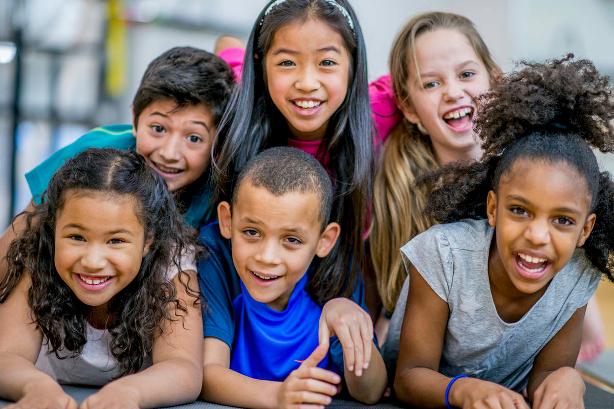

school, they may experiencecultural displacement, which can hinder both their personal growth and academic success As Marginson (2016) discusses, linguistic and cultural differencesare often viewed as deficits rather than strengths However, schools that acknowledge and celebrate the hybrid identities of transnational students create environments that value diversity and support creativity Cultural events like Chinese New Year celebrations in schools can provide opportunities for students to view their cultural backgrounds as valuableassetsrather than barriers

Educational theorists such as Robinson (2006) have critiqued the standardized structure of modern education, arguing that it stifles creativity by imposing arigid hierarchy of subjects Robinson suggests that global educational systems often prioritize subjectslike mathematicsand languages, followed by the humanities and sciences, while creative disciplines such as the arts are frequently marginalized. This hierarchical structure undervaluescreativity asan essential component of a well-rounded education. By evaluating students solely on their achievements in narrowly defined academic subjects, schools risk limiting their creative potential and discouraging innovative thinking.
To address these limitations, educational institutions must rethink traditional norms surrounding teaching, learning, and assessment Movingaway from aone-size-fits-all model, schools should adopt more inclusive frameworks that
recognize multiple forms of intelligence, including artistic and creativetalents. Encouraging creativity in students requires not only promoting divergent thinking but also embracing diverse cultural experiences and expressions as vital elements of the learning process. Valuing these differencescan createmoreinclusivelearningenvironmentswhere all students, regardless of background, can thrive and develop their creativecapacities




Thedevelopment of creativity in studentsis closely intertwined with their educational environments and cultural contexts Schools that embrace diverse teaching approaches, foster collaborative problem-solving, and respect students?cultural and linguistic backgrounds are better equipped to nurture creativity By challenging conventional norms and creating spaces for creative expression, educators can empower students to become innovative thinkers and problem-solvers, equipped to thrive in an increasingly interconnected and complex world






REFERENCES
Abadzi,H.(2013).ExploringCreativity:APractical Guidefor Educators.Washington,DC: World Bank. Claxton,G.(2011).What?sthePoint of School?London:Oneworld Publications. Marginson,S.(2016).Student Self-Formation in International Education.London:Routledge. Robinson,K.(2006).DoSchoolsKill Creativity?[TEDTalk].TEDConferences.Availableat https://www ted com/talks/sir ken robinson do schools kill creativity








First-YearVoices
Whatwasyourmostuniquelearningexperience?
Mygr.12psychologyteacher was alsoafoodandnutritionteacher.

Soonedaywhenmyclass(of mostlygirls)wasstruggling,she pausedtheclassandwemade cookies.Itwasthebest.

Myseniorphysicsteacher nearlyhit mewithabucketfullofwaterto proveapointabout centripetalforce



Mymost uniqueeduexperiencehas beenputtingonaplayfor ShakespeareinEnglishclass.I also lovefieldtrips!

InEnglishclasswewentonwalks andhadtowriteaboutwhatever we feltwhilewalking.


Myteacher toldmeI didn?tlooklikeI wouldsucceedinphysics(btwI?mgoing intophysics)


Gettingemailfromacourse coordinator tellingeveryonetotakea showerwassomethingelselol!

Analyzingthephilosophicalvalueof aTI-89pluscecalculator
Helpingtoredirectakid'sattention andenergybynotraisingmyvoice andcommunicatingclearly




Workingonmytown?sgov.tosurvey localtreehealth.

Englishteacher madeusmake memesofhimforextracredit


Teachkidsinruralareathrough gamestomaketheminterestedin learningEnglish


Usingplaygroundknowledgein physics

Doinglawclub+mocktrialin grade12


DoingschoolinFranceforgrade5!

Threwfakespearsatfake mammothsusingahandmade atlatlinarchaeologygr.12

Writerscraft becauseofthe creativefreedomthecoursegave
First-YearVoices
Whatwasyourmostuniquelearningexperience?

Havingclassoutside


Givingmyexamnotestoover40 peoplelol

Fieldtripforanecologycoursein highschool
Gettingadmittedtothebestuni inCanada&theworld!!

Wenttoacourthouseforlaw class!

Doingclass(English)onyoga matsoutside


Fost er ingCl assr oom Communit y Thr ough
Col l abor at iveLear ning
Erica Chong
Second Year
Major in Sociology
Minorsin English and Education & Society
WHEN YOU LOOK BACK ON YOUR TIME IN SCHOOL, what do you remember most fondly? Perhaps it?s the hours of fun playing four square and tagat recess,or thescienceclasswhereyou had to work in a group to build the strongest bridge using paper and tape. Whatever it is, the connections with our teachers and peers are at the centreof many of our favouritememoriesof school.
Such memories underscore the integral role community plays in shaping positive school
experiences. So how can we, as aspiring teachers, cultivate a sense of community? One way is by integrating collaborative learningintoour teaching
Duringmy placement last year in Ms. B?s class, I saw firsthand how collaborative learning? a teaching strategy involving students working together? can promote camaraderie and feelings of belonging. Working closely together allowed students to build connections, learn about each other?s strengths, and celebrate those strengths with shout-outs like, ?Tessa was so helpful in math today She?s really good at explaining how to add fractions!? This recognition of individual strengths likely contributed to a sense of appreciation and belongingin thestudents.
Beyond fostering belonging, engaging in group activities can support social development, as we see during recess While recess nurtures social and emotional learning skills (SEL)? such as communication, cooperation, and problem-solving? through unstructured play, collaborative learning provides a structured setting for students to develop these skills. In Ms. B's class, I was able to observe studentsapplying SEL skills. When students were playing games after finishing work early, I noticed that they were communicating respectfully, sharing materials, and readily inviting others to join. It wasgratifyingtoseethesocial skills they honed through working together being transferred to their own group activities.

Over the course of my placement, I witnessed various applications of collaborative learning For example, in math class, Ms. B often used a type of collaborative learning known as peer teaching. She would first teach the lesson and then have students pair up and take turns verbalizing and demonstrating the steps they were just shown to complete assigned problems. Whilethey worked,she would circulate the room, making sure that everyone was on the right track. At the end of the class, Ms B would take up the questions and review concepts as needed By using this method, students wereableto reinforcetheir understanding of the material while simultaneously building positive relationships with their peers.
Peer teaching is just one example of collaborative learning; there are many ways teachers can introduce it into the classroom For instance, in English, teachers can facilitate literature circles, incorporate role-playing, or set up peer review sessions. Similarly, in science, collaborative learning could involve hands-on activities, case studies, or the
jigsaw strategy, where students work in groups to research and present different aspectsof atopic.
The key to incorporating collaborative learning is to be creative and open to a variety of approaches to collaboration From think-pair-share exercises to group discussions of various scenarios, the possibilities are endless. In adding variety to collaborativeactivities, teacherscan keep the learningexperienceengagingfor students.
Ultimately, a positive learning environment starts with community. By adding collaborative learning to our toolbox of teaching strategies, we can build a strong community that fosters student success within and beyond the classroom.

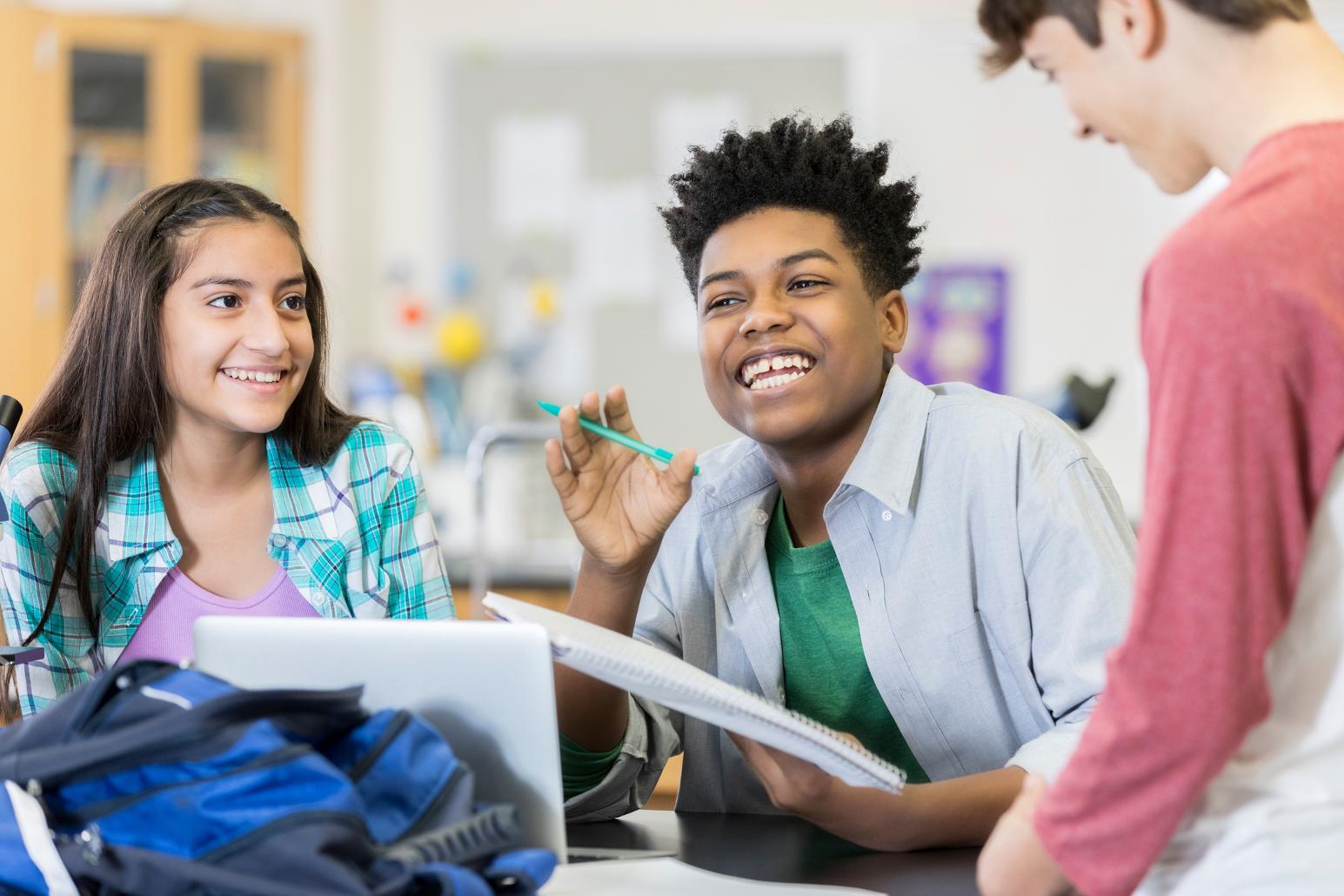

? ? By ad d i n g collabor ative lear n i n g to ou r toolbox of teach i n g str ategi es, w e can bu i ld a str on g com m u n i ty th at f oster s stu d en t su ccess w i th i n an d beyon d th e classr oom .
- Erica Chong
EXECUTIVE FINAL THOUGHTS
1) What doesteachingoutsideof thebox mean toyou?
2) What isoneexampleof teachingoutsidethebox that you haveseen or experienced in your own schooling?




Nina Dawicki
1) Tome,teachingoutsidethebox meansconveyingand meeting learningrequirementsthrough uniqueand untraditional methods Whether that beallowingfor classestooccur outsidetypical classroom settingsor implementingcreativity-focused,or student-directed assignments.Overall,it meansdoingthings differently than how they havebeen donein thepast
Sydney Pacheco
- Editor in Chief - Editor in Chief
1) Tome,in itssimplest form,teachingoutsideof thebox means educatorsapplyingconceptsin interestingwaystopromotecreative and engagingthinkingin students
Hannah Kim-Cragg- Head
of Productions
1) For me, teachingoutsidethebox meansdoingmy best todotwo things:gettingstudentsout of theclassroom,whilebringing real-world issuesand applicableskillsintotheclassroom! I'm not sure how well I will beabletoaccomplish thisasateacher,but it's somethingI strivetodo
Benjamin Gauntley - Internal Relations
1) Tome,"teachingoutsideof thebox" requiresan understandingof innovation and creativity Teachersmust beprepared toadapt to their students' needsand learningcapabilitiesby creatinglesson planswhich better connect them totheir academics Additionally,I believethat incorporation of abetter physical environment (in the classroom) hasalot todowith teachingoutsideof thebox,asit can haveasignificant impact on mental health and adesiretolearn!





Brisa Liu - Senior ProductionsMember
1) Teachingoutsideof thebox meanshavingtoput extraeffort in the method of instruction that differsfrom thenorm.In relation tothe subject matter taught,themethod and material should work together toimprovethelearningexperiencefor students.
1) I believeteachingoutsidethebox means creatingan engaginglearningenvironment that
Ren Minamisono - Senior Productions Member provideseach student with theflexibility and toolstoexplorein a way that best suitstheir needsand creativity.Specifically,I believe such flexibility beginswith buildingaclassroom that isaccessibleto all students, fosteringaspacewherestudentscan form meaningful, personal connectionswith thegiven material
Melody Mo- Senior ProductionsMember
1) Teachingoutsidethebox isfindingpersonalized waystolearn. Whether itstailoringtutoringsessionstoeach tuteeby comingup with analogiestogamesthey likeor designingworksheetsthat slowly increasein difficulty,or usingsocial mediatoexposeyourself toa subject'shumour,therearealot of waystoteach other than directly talkingat astudent
Amaan Baweja - Senior Editor
2) I attended aMontessori school through grade6and greatly benefitted from thefreedom it allowed me.Spendingmuch of my timeon uniquehands-on science,engineeringand math challenges allowed metodevelop very strongproblem solvingand reasoning skillsin addition toapropensity for buildingthings.
Austin Hewu - Senior Editor
1) Tome,teachingoutsideof thebox meansbreakingfreefrom conventional methodology toinspirecuriosity It allowsustobetter adapt totheuniqueneedsof each learner and createan environment whereevery student feelsempowered toreach their full potential.
Anne Chen
- First Year Rep
1) Tome,teachingoutsideof thebox islikechoosingtowear mismatched socks Even though somepeoplemight not seethem underneath theshoe,you know you?redoingsomethingatypical and revolutionary Whileteachingoutsideof thebox might seem likea grand idea,I think it?sthesubtledifferencesthat help makea change

Aryan Rajagopal

- First Year Rep
2) When my grade10history teacher ran astock market simulation for twodaystoteach usabout theGreat Depression (I lost everything lol)
Nicole Pacheco
- First Year Rep
2) For our final assignment in ANA124:Kinesiology Human Anatomy I:Organ Systems,wehad tocreateagametohelp with learningor reviewingfor atopicwelearned thisyear and played it on thefinal day of classes It wasnicetoreview thecontent in afun way that I wouldn't typically doon my own!

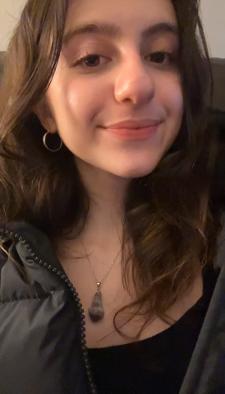
Nina Zambito
- First Year Rep
2) Oneexampleof thinkingoutsidethebox teachingthat I have experienced wasthetimemy middleschool teacher had ustakea scheduled walk-through of High Park after our biology unit on ecosystems.Beingabletoseetheecosystemswewerelearningabout right in front of my eyesinspired metofurther takean interest in the subject of biology and thesciencesin general .Thisled metoexplore
Sunny Sien
- Illustrator
1) I think teachingoutsideof thebox meanscreatingaway tomeet your studentshalfway ?engagethem and engagewiththem Makeit fun!


Irene Hwang
- Social MediaRep
1) In responsetothefirst question,I would say that "Teachingoutside of thebox meanstobeabletofind different methodsof learningthat can cater toawidevariety of students! It doesn't mean that it hasto bethemost efficient way aslearningisajourney,but that astudent is abletotakeaway at least someknowledgefrom it "
Lauren De Rango
- Social MediaRep
2) In my own schooling,I havebeen exposed tolearningenvironments that unexpectedly enhanced and solidified my knowledge,such asthe learningof historical milestonesof theResidential School system by actively readingarchival documentswritten by key stakeholders Egerton Ryerson and Peter Jones.By exploring"outsideof thebox" experiences,studentsareencouraged tointeract with thematerial presented in away that resonateswith their learningstyle.

Erica Chong
Alex Teschow

- EventsCoordinator
1) I think teachingoutsidethebox worksasan expression,both literally and figuratively.Yes,schoolsareadeliberatevenuefor education,but weshould not beafraid toexplorealternatespacesif they elevatelearningexperiences.Weshould hold thissame consideration for all aspectsof teaching
- FeatureWriter
1) Tome,teachingoutsidethebox meansfindinguniqueand creative waystoinstill aloveof learningin students.
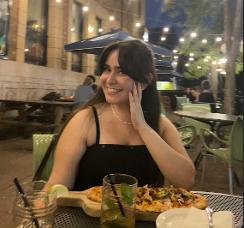
Arianne
Rodriguez
- FeatureWriter

2) In my Grade12CommunicationsTechnology course,wehad tocreate agraduation video,somy friendsand I decided torecreateFerris Bueller'sDay Off,wherewe"skipped school" tospend aday out in Downtown Toronto It wasbecauseof my teacher'slovefor themovie and passion for creativeassignmentsthat helet ususeclassroom technology outsideof theclassroom,creatinglastingmemories

HEY,TEACH!ISDEDICATEDTODEVELOPINGTHE
PHILOSOPHIESANDIDEASOFASPIRINGTEACHERS .
THESTAFFOFHEY,TEACH!MAGAZINEEXTEND
THEIRDEEPESTGRATITUDETOVICTORIACOLLEGE
FAcULTYADVISORPROFESSORJULIAFORGIE,THE
SUPPORTINGSTAFFOFTHEOFFICEOFTHE PRINCIPAL,ANDVUSAC.THANKYOU !
